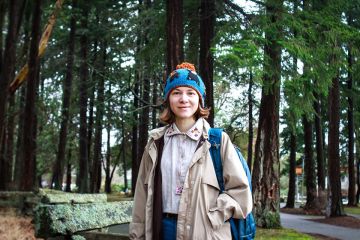#MakingEME second only to #royalvisitcanada
On Sept. 24, “Making Early Middle English: An International Conference on English Literature and its Contexts” at UVic triggered a flood of tweets that nearly surpassed Twitter traffic for the Duke and Duchess of Cambridge’s arrival in Victoria (the second day of the three-day conference organized by Adrienne Williams Boyarin of the Department of English and funded by a SSHRC Connection Grant).
From Sept. 23 to 25, conference delegates and members of the public discovered even more about what English life and culture was like in the Early Middle English period, circa 1100–1350 (which includes the era that bestselling author Ken Follett’s hugely popular Pillars of the Earth trilogy brings to vivid life)—a period bookended by the Norman Conquest in 1066 and the Black Plague in 1348, full of literary experimentation, intense linguistic change and cultural developments from Ireland to the Middle East.
The program featured a keynote-speaker series including two Lansdowne Lectures, “Medieval English Rabbis – Image and Self-Image” by Pinchas Roth of Bar-Ilan University, on Jewish intellectual and scholarly life in medieval England, and “Twelfth Century Transformations” by Laura Ashe of the University of Oxford, on vast transformations across Europe in how people perceived, understood and explored their places in the world. Visit hcmc.uvic.ca/makingEME to find out more.
#makingEME
Twitter rates trends based on complicated algorithms that take into account individual users and their locations, as well as user networks and much more. When the delegates saw #makingEME trending second only to #royalvisitcanada, this did not necessarily mean that either of these had the most tweets, views, or retweets but rather that enough people in enough shared networks in enough overlapping locations had both topics in high volume on the afternoon and evening of Sept. 24.
In this story
Keywords: literature, history




